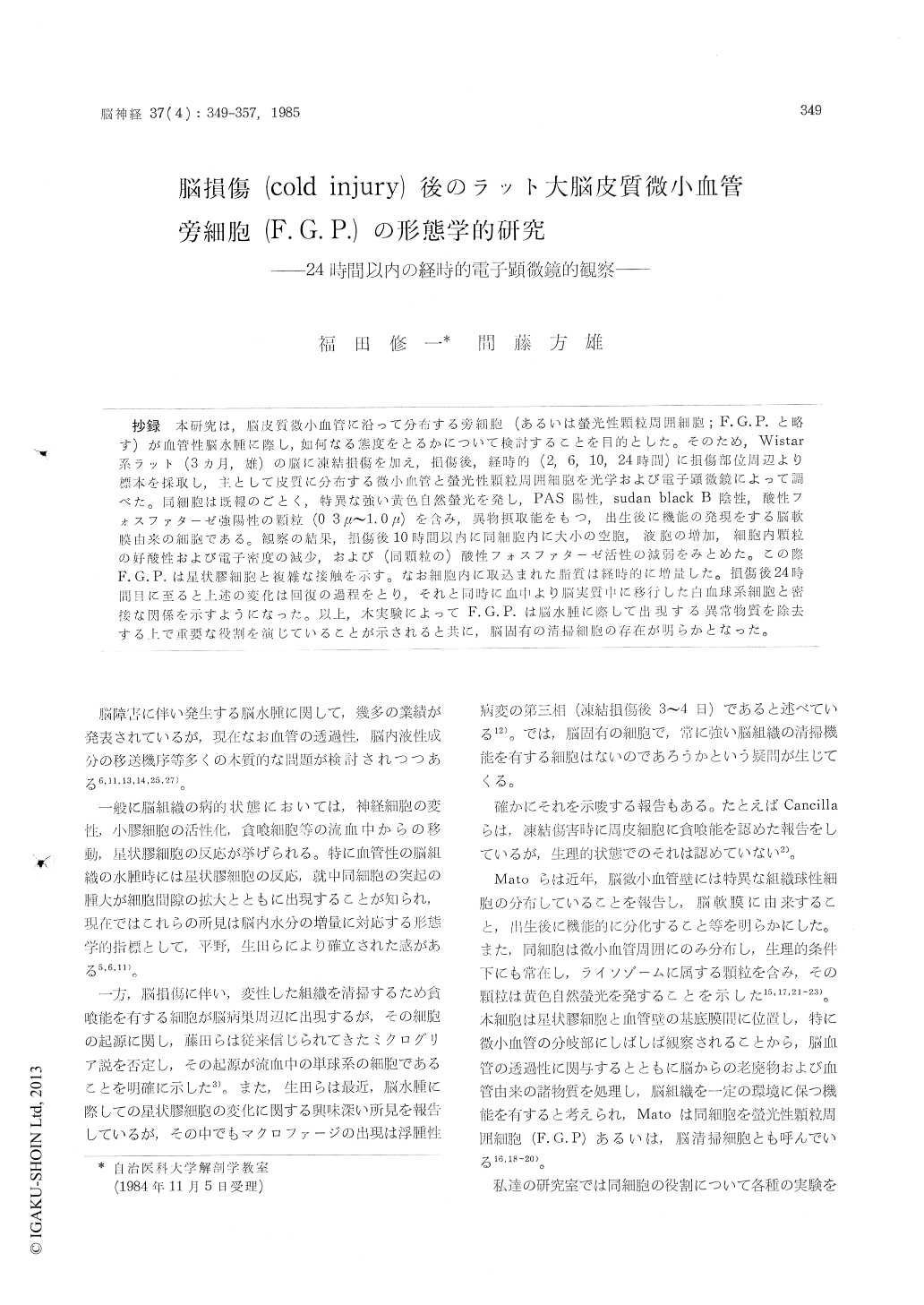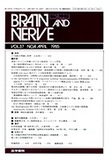Japanese
English
- 有料閲覧
- Abstract 文献概要
- 1ページ目 Look Inside
抄録 本研究は,脳皮質微小血管に沿って分布する旁細胞(あるいは螢光性顆粒周囲細胞;F.G.P.と略す)が血管性脳水腫に際し,如何なる態度をとるかについて検討することを目的とした。そのため,Wistar系ラット(3カ月,雄)の脳に凍結損傷を加え,損傷後,経時的(2,6,10,24時間)に損傷部位周辺より標本を採取し,主として皮質に分布する微小血管と螢光性顆粒周囲細胞を光学および電子顕微鏡によって調べた。同細胞は既報のごとく,特異な強い黄色自然螢光を発し,PAS陽性,sudan black B陰性,酸性フォスファターゼ強陽性の顆粒(03μ〜1.0μ)を含み,異物摂取能をもつ,出生後に機能の発現をする脳軟膜由来の細胞である。観察の結果,損傷後10時間以内に同細胞内に大小の空胞,液胞の増加,細胞内顆粒の好酸性および電子密度の減少,および(同顆粒の)酸性フォスファターゼ活性の減弱をみとめた。この際F.G.P.は星状膠細胞と複雑な接触を示す。なお細胞内に取込まれた脂質は経時的に増量した。損傷後24時間目に至ると上述の変化は回復の過程をとり,それと同時に血中より脳実質中に移行した白血球系細胞と密接な関係を示すようになった。以上,本実験によってF.G.P.は脳水腫に際して出現する異常物質を除去する上で重要な役割を演じていることが示されると共に,脳固有の清掃細胞の存在が明らかとなった。
As the potentiated cells in reaction to cerebral edema and damage, microglia, astrocytes and mac-rophages had been listed. Recent neuropatholo-gical study elucidated that most of cerebral mac-rophages were derived from blood leucocytes including monocytes.
Several years ago, one of the authors reported the presence of histiocytic cells in peri vascular space and named them as fluorescent granular perithelial (F. G. P.) cells from their morphological characteristics.
The present paper is concerned with the res-ponse of the F. G. P. cells to the vasogenic edema induced with cold injury.
The animals employed were Wistar male rats aged 3 months. At 2, 6, 10, and 24 hours after the cold injury, cerebral cortex was excised, and spe-cimens were prepared for light and electron mic-roscopical observations.
As already reported, the F. G. P. cells included autofluorescent and PAS positive granules. The intracellular granules were rich in hydrolytic enzymes and lack in sudanophile substances. The F. G. P. cells were derived from leptomeningeal cells and acquired uptake capacity for exo- and endogenous substance after birth. In this paper, the F. G. P. cells locating in the boundary between cold injured and healthy regions were observed.
At 2 to 10 hours after cold injury, the F. G. P. cells were vacuolated and swollen, and the elect-ron opacity of them decreased moderately. Lipoid-al substance appeared in the intracellular granu-les first at 2 hours and then increased, while the activity of acid phosphatase in them became low in corresponding with a time interval after the cold injury. At this period, occasionally the F. G. P. cells possessed a complicated boundary to ast-rocytes surrounding them.
In general, such morphological changes were reversible and recovered partially around at 24 hours. Further, at this final stage, deep plasma-lemmal invaginations developed on the F. G. P. cells, and contacted firmly to projections of leu-cocytes.
The evidence mentioned above suggests the contribution of the F. G. P. cells for scavenging extracellular fluid in a cerebral edema. During the experiment, migration and proliferation of the F. G. P. could not be detected.

Copyright © 1985, Igaku-Shoin Ltd. All rights reserved.


